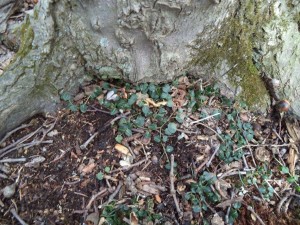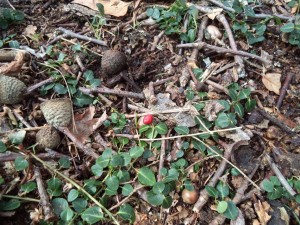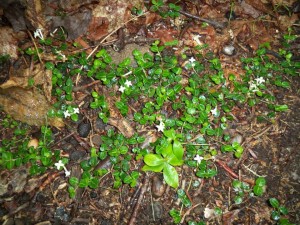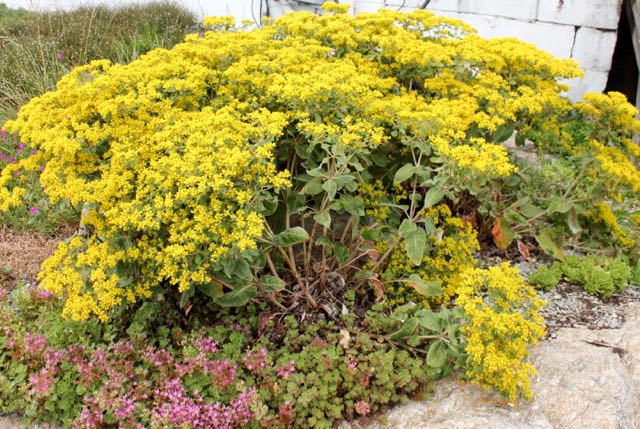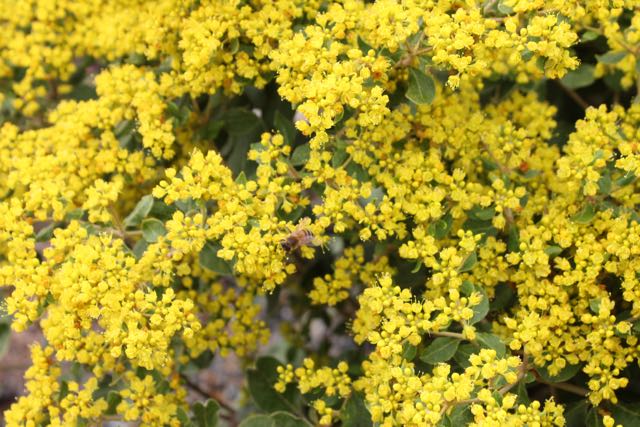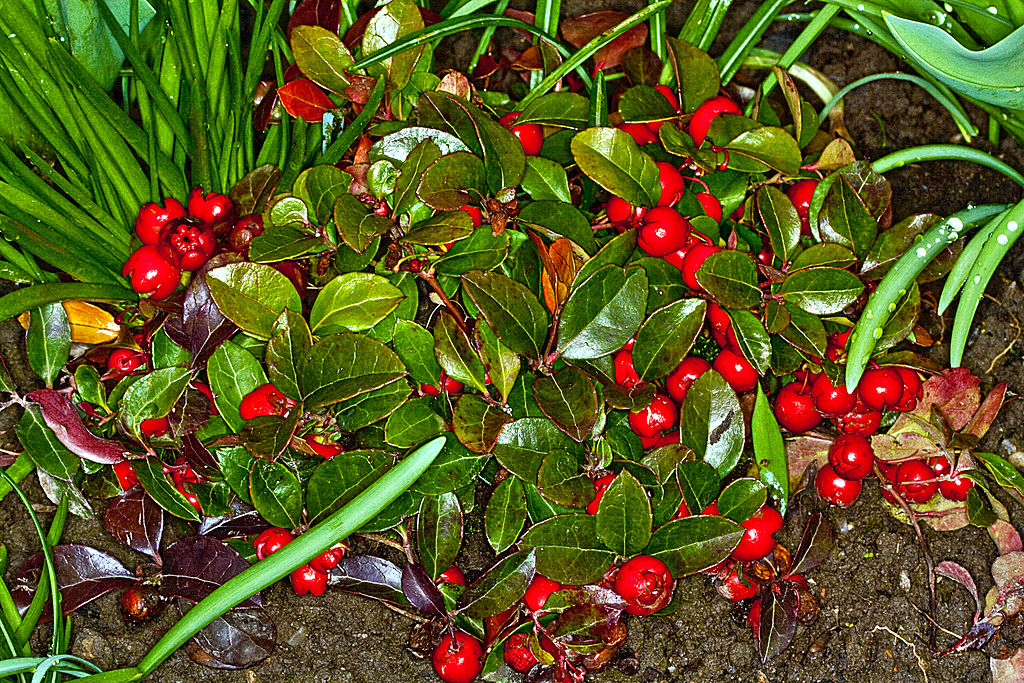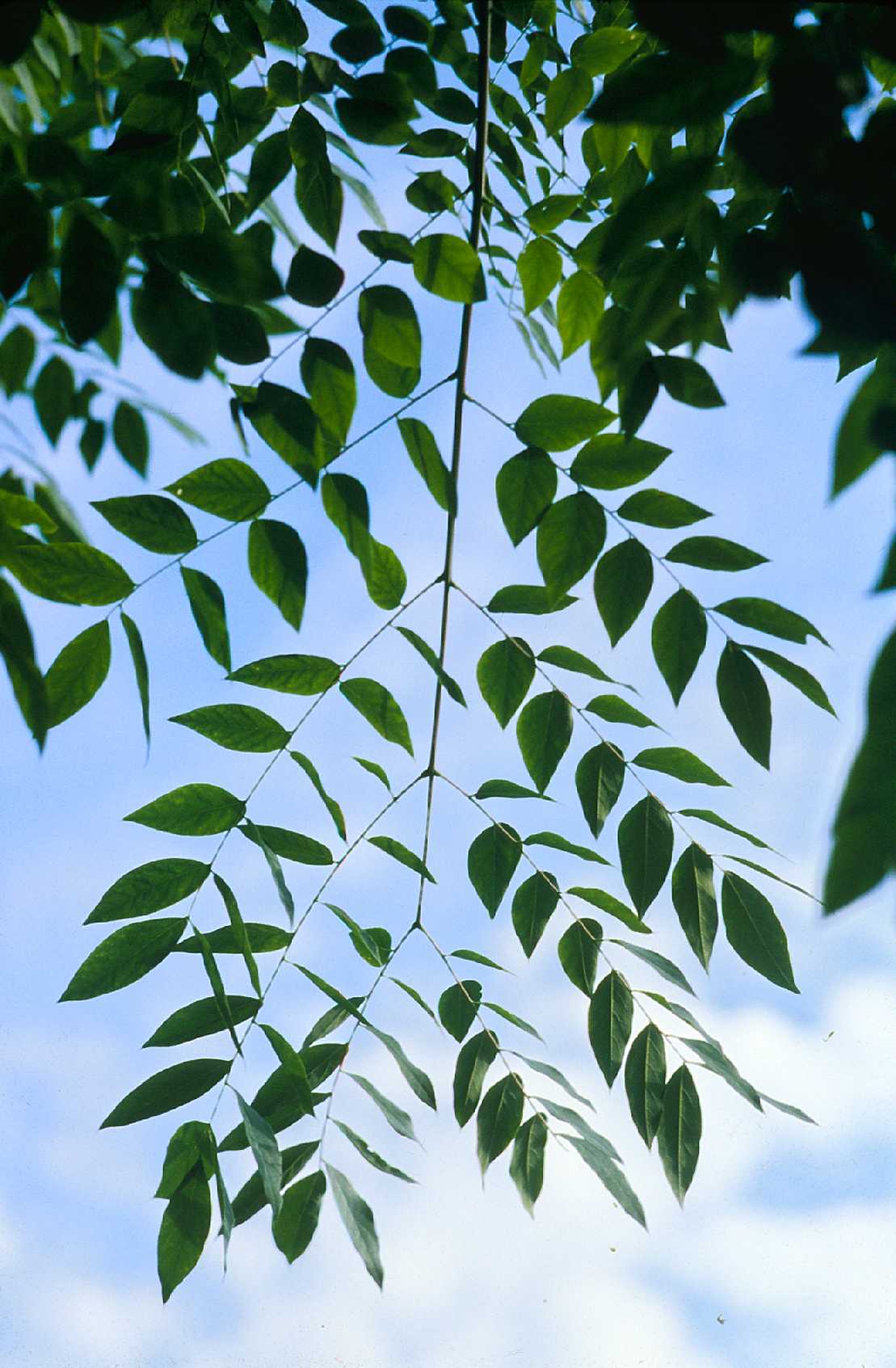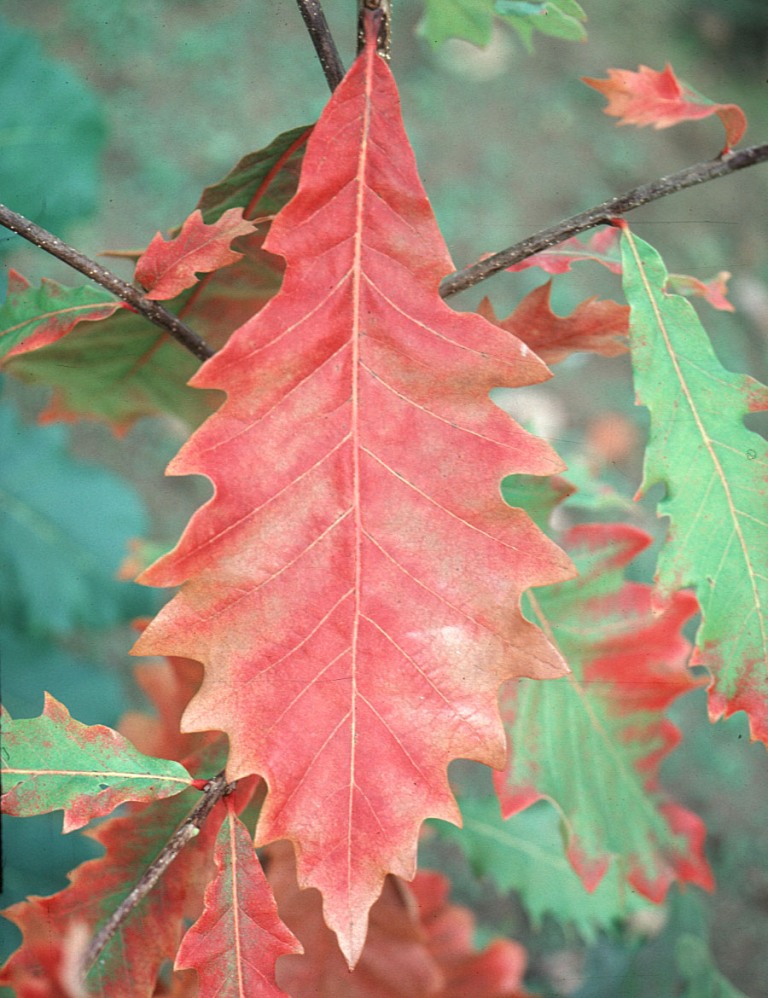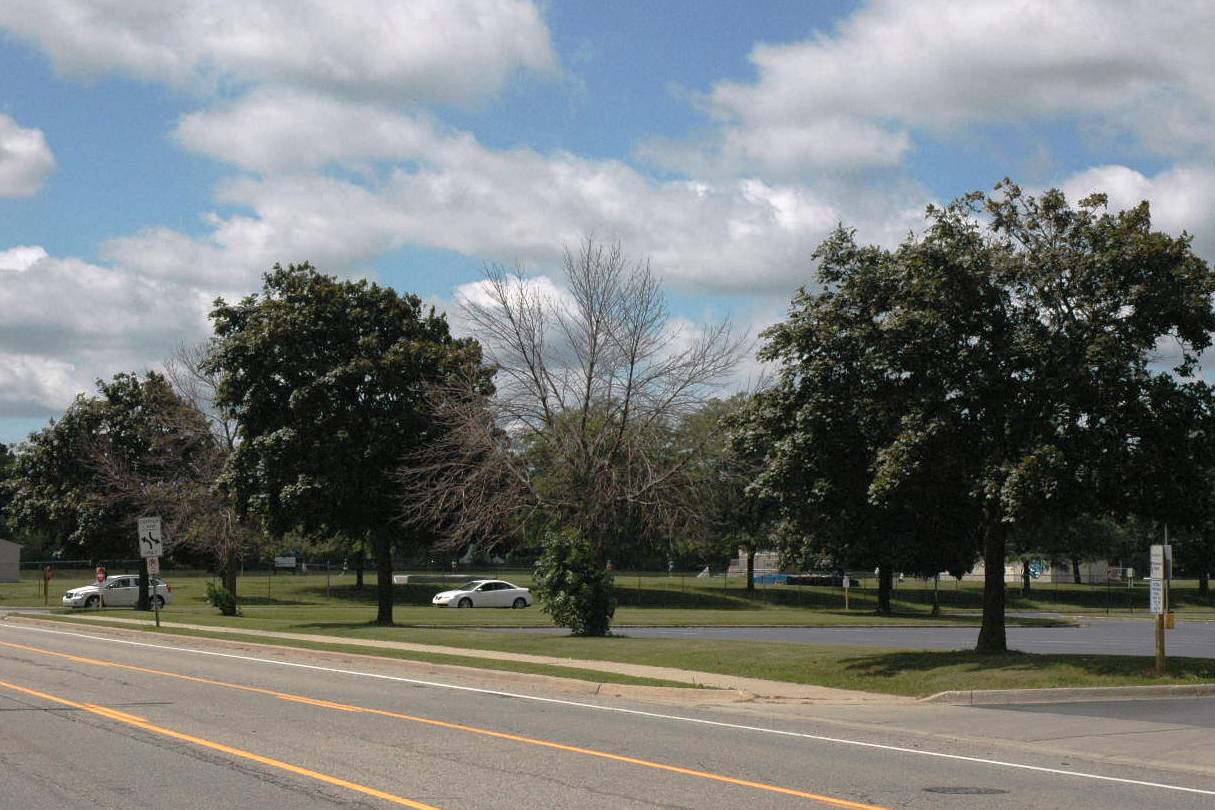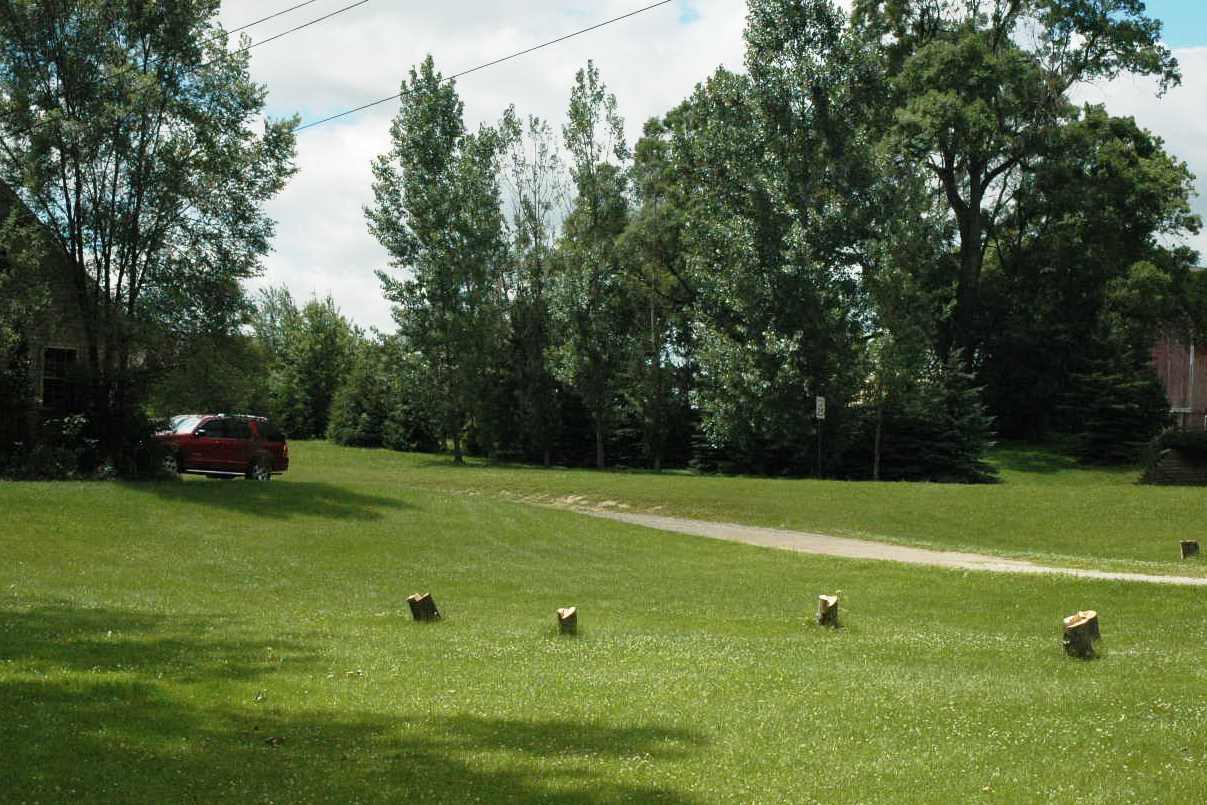Partridge Berry in its Natural Setting
One of the questions that came up regularly when I was working the hotline at the local county Extension office, is a recommendation for an evergreen ground cover for shady spots. I had the same issue when I created my own shade garden … something that would have year round interest, but complement my desire to emphasize native species, although that was only one consideration.
The solution was literally right next to me, as a walk in my woods revealed with the lovely plant Partridge Berry, or Mitchella repens.
Not only is Partridge Berry (Mitchella repens ) beautiful, evergreen, shade-loving, and native to Eastern North America, but there’s also a fascinating aspect about its flowers and fruit, from a botanical, and evolutionary point of view.
According to the U.S. Forest Service Celebrating Wildflowers website, the “… genus name Mitchella was given to this plant by Linnaeus for his friend John Mitchell, a physician who developed a method of treating yellow fever. The species name repens refers to its trailing or creeping habit.”
Here’s the part I found fascinating: The plant is dimorphous, meaning “occurring in two forms”:
In late spring, two beautiful white flowers (with one calyx) each open their four petals to entice insects to collect their nectar. Each blossom has one pistil and four stamens. The pistil in one is short and the stamens are long. In the other it is just the opposite. … Because of this no flower can fertilize itself–all flowers must be cross-pollinated by insects, and both flowers must be pollinated to get a single healthy berry. A berry will stay on the vine until after the blooms appear in the spring unless a hungry bird finds it nestled among the fallen winter leaves.
How cool is that? The twin flowers produce, together, only one berry.
Here’s a closeup, where you can see residual evidence of the fusion. The berry is edible, and persists through the winter, assuming it is not consumed by “ruffed grouse, northern bobwhite, sharp-tailed grouse, and prairie chicken.
The fruit is also “frequently eaten by raccoons and red fox” and it has been reported that “partridgeberry made up 2.9 to 3.4 percent (dry weight) of the summer and fall diets of white-tailed deer.”
Here’s a picture of the two flowers in bloom.
It’s easiest to spot the plant in its natural setting while hiking in late Fall, or early Winter before snowfall, or early Spring after snowmelt.
Back to the Forest Service article:
Some gardeners consider Partridge Berry a must for winter gardens. During the cold days of late winter Partridge Berry is a treat to the eyes with its deep, dark-green leaves and occasional scarlet berries. In a garden setting this evergreen prefers shade, accepting the morning sun. Partridge Berry is extremely difficult to propagate from seed.
The best way to introduce this native into your garden is through 1 year old cuttings or by division. In the garden situation they will form a thick, substantial ground cover. Once established they are relatively trouble free with the only required maintenance of keeping garden debris from covering the mats.
As always, do not wild collect plants from public lands and only from private lands when the landowner grants permission. Partridge Berry is a commonly available plant from native plant nurseries especially those who specialize in woodland plants.
I love the symmetrical variegation in the evergreen leaves, a bright, light yellow line bisecting each leaf, and the delicate, less visible veins.
It’s a great alternative to Vinca, an introduced species from Europe that appears on invasive species lists in our area.
A Google search will reveal many potential on-line sources for buying Partridge Berry plants, or check with a local nursery, or independent gardening center in the native plant section.
